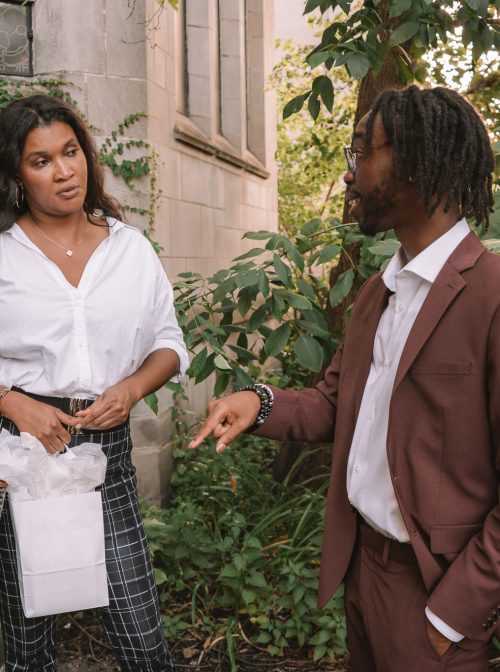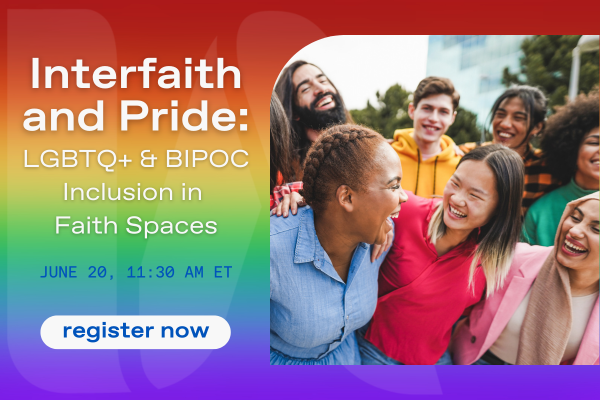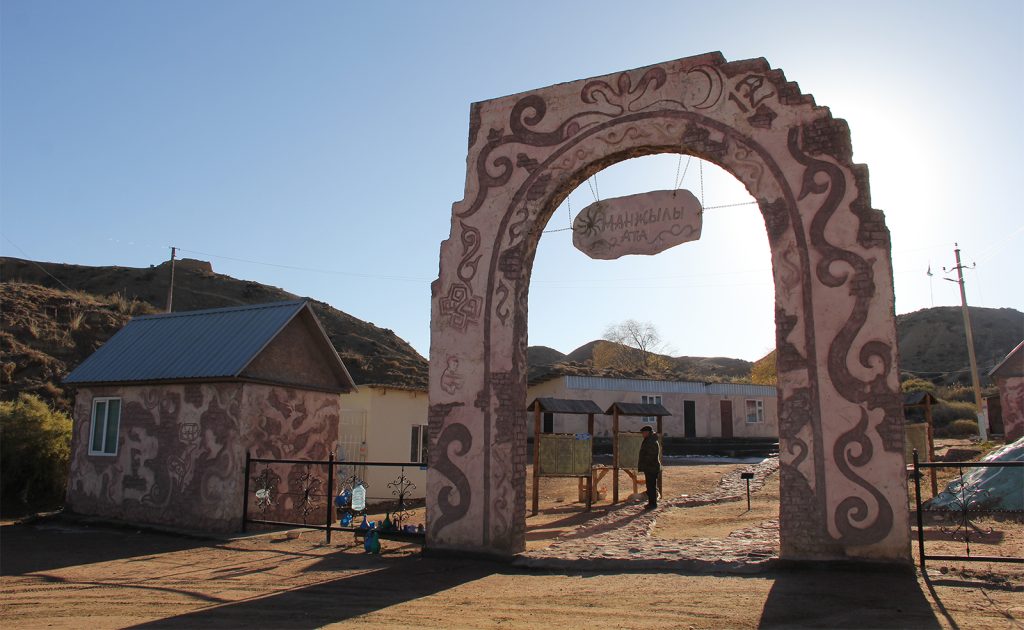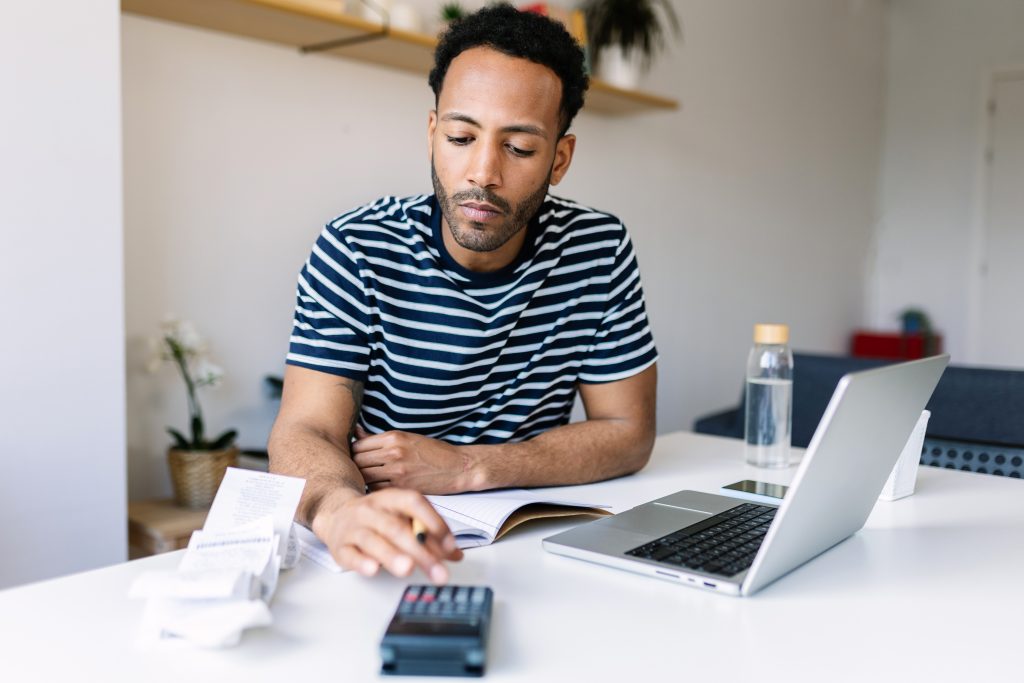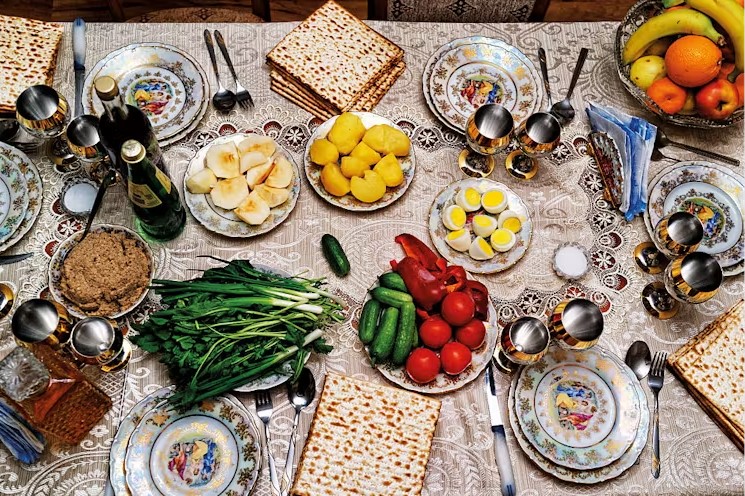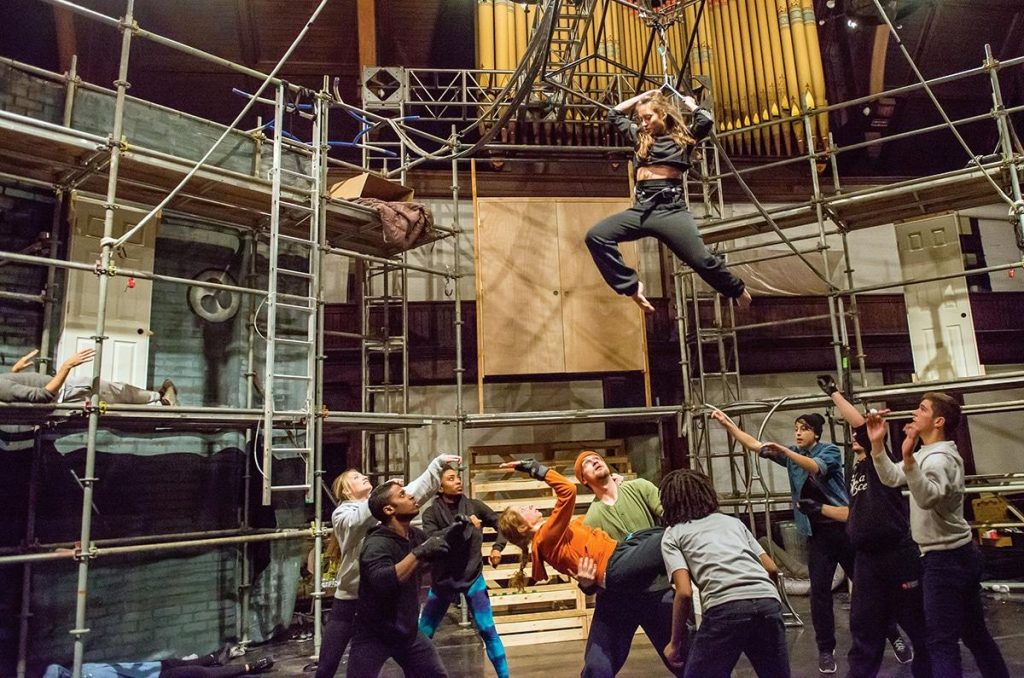The Rev. Don Abram of Chicago is the founder of Pride in the Pews, an organization dedicated to making Black churches inclusive space for LGBTQ+ Christians.
On Feb. 24, Pride in the Pews will host a daylong symposium at Union Theological Seminary in New York City, “The State of the Black Church: Reconciling Communities and Reimagining Inclusion.” The event, co-sponsored by Interfaith America, will be in-person and livestreamed, and registration is now open.
To mark National Black HIV/AIDS Awareness Day, Abram recently sat down with Monique Parsons, managing editor of Interfaith America Magazine, to reflect on his journey to create Pride in the Pews and why he’s excited about its new Black Church Equality Fellowship. The initiative offers $4,000 grants to Black churches to carry out projects related to LGBTQ+ inclusion within their local context. “As far as I know, this is a first of its kind fellowship that has focused exclusively on the Black church and advancing LGBTQ+ inclusion, and we are thrilled to be able to offer it to churches across the country,” Abram said.
The conversation has been lightly edited for length and clarity.
Interfaith America: How did Pride in the Pews get started?
The Rev. Don Abram: I like to start the story of Pride in the Pews with my own story, because the work that we do is so deeply connected to the experience that I had, but also that so many other Black LGBTQ+ Christians as it relates to their relationship with the Black church. I grew up on the Southside of Chicago, born and raised. And I attended this hand-clapping Black church right down the street from me, Greater New Mount Eagle Missionary Baptist Church, and that was the place where I was able to find my first spiritual home. I was an usher, I was in the band, I was a junior deacon, and at the age of 14, I made my way to the pulpit. I started preaching the gospel, and I loved it. My preaching career took off. I was preaching across the city of Chicago, and eventually across the country, as folks were really excited about this young man who was on fire for God.
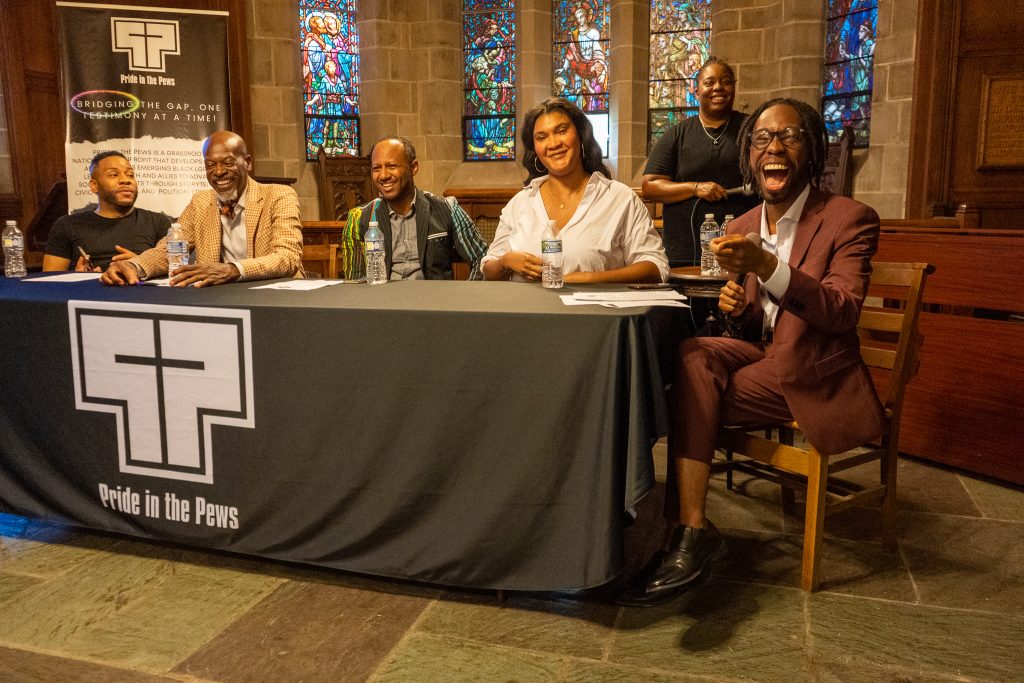
IA: Where were the seeds planted, where did you begin to see that churches must do a better job of being welcoming to LGBTQ folks.
DA: As a student at Pomona College, that’s where I was introduced to other communities and other struggles that weren’t directly connected with my own. At the time, I asserted myself as a straight Black man who was navigating the world at a time where Trayvon Martin became my introduction to political consciousness. I was deeply moved to act, particularly in moments of injustice or when communities were being marginalized or oppressed. I knew that was at the core of the Black church. I studied the Black church deeply — the history and the ways in which it has always been on the front lines of liberation and equality. I met folks who were part of the undocumented community. I met folks who were LGBTQ+. I met religious minorities. And I saw intersections between our struggle and believed that the same forces that sought to oppress and silence them, were also doing the same to Black folks. And so, I began to become really interested in preaching a gospel focused on those who are on the underside of power. Because ultimately, that’s how I saw the ministry of Jesus.
IA: We recently learned of Tyre Nichols’ fatal beating at the hands of police in Memphis. Your message is heartbreakingly relevant as ever.
DA: Yes, it is. I am heartened to see Black pastors and preachers like Pastor Jamal Bryant of Atlanta speak out forcefully against the heinous and brutal beating of Mr. Nichols. And because I exist at the intersection, I’m deeply grieved by the fact that we have yet to see a robust response on the part of the Black church to advocate for Black trans women, who experienced the highest death rate on record among trans women. The unfortunate reality is that Black trans women are struggling and their names will not go viral in the Black church as it is today. What does it look like when all of our community is able to have the Black church as an advocate, just as when straight Black men are persecuted or even killed by state sanctioned violence?
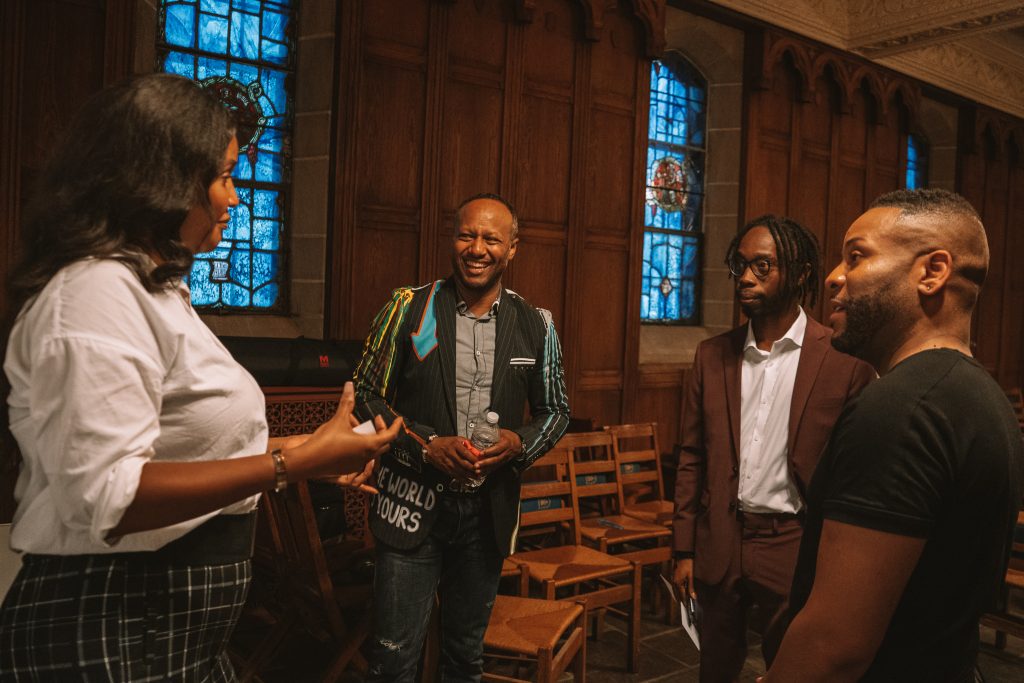
IA: How did you get to the next step, to starting a nonprofit dedicated to this issue?
DA: It began with a conversation that I had with a colleague of mine at Harvard Divinity School. He had invited me out for coffee, and I reluctantly accepted. And I say reluctantly, because by all accounts, we were so different from one another. His name is Karl Bandtel. And Karl was this 50-year-old white man who was taking classes at Harvard Divinity School, because he wanted to expand his own knowledge about various faith traditions, but also to think deeply about his purpose in the world. And that was very different from the reason why I came to that school. He invited me out because he said he was moved by my contributions in the classroom. And so I consented to go out for coffee. And unbeknownst to me, that was actually the genesis of Pride of the Pews becoming a reality. We struck up a friendship, and we stayed in contact. We were on the phone right after the George Floyd protests, and I express my frustrations with the silence of the Black church, but also the absence of the Black church when it came to advocating for justice in the public square. I was particularly frustrated, because although we saw an outpouring of support, for justice, for George Floyd, my heart broke much like it’s breaking today, because I knew that the Black church apparatus did not make room for Black LGBTQ+ folk who have died at the hands of state-sanctioned violence, or even at the hands of the members of our own community.
If the Black church desires to carry the banner of freedom it supposedly is known for, it has to include LGBTQ+ folk in its advocacy.
That frustration led me to do really a sharp critique. If the Black church desires to carry the banner of freedom it supposedly is known for, it has to include LGBTQ+ folk in its advocacy. I began to express the need to meet the Black church where they were, so that they might be able to gain more knowledge, more skills, and more resources, to not only make their churches more affirming, but to begin to advocate in the public square on behalf of the community. And the idea of Pride of the Pews emerged from that. Karl’s foundation gave me $40,000 to actually implement a solution.
Initially, I said, what I want to do is have a storytelling project called “Can I Get a Witness?” where we collect Black LGBTQ+ Christian stories, and from the wisdom of those inherited stories, we’ll create curriculum and get in in the hands of churches who could benefit from it. And as we began to collect stories, it quickly became clear to me that the work that I have been called to do, and the work that Pride in the Pews has been called to do is more than just a project. It is a full-time job. And so we went from $40,000 of Karl’s initial investment to now moving into this year with just over $300,000 from multiple sources.
IA: Tell us about February 24 symposium at Union Theological Seminary.
DA: Pride in the Pews is hosting the State of the Black Church Symposium. One of the most pressing and salient questions asked of Pride in the Pews is: “How can I participate when I am not able to preach my theology in my own pulpit? How do I show support for Pride in the Pews without leaving my congregation behind?” They say, I know this is a problem, and I’m interested in moving the needle, but I don’t know how to do it within my congregational setting. And so we decided to focus on how we bridge the gap between the Black church and the LGBTQ+ community in the pew, and the pulpit and in the public square.
These are the three panels that will be highlighted at the symposium, asking folk what does it look like to bridge the gap between a mother and her queer son? What does it look like to bridge the gap between the pastor and those who are in the pew? What does bridging the gap look like for faith leaders and the public square? Our ultimate ask is how do we reconcile these two communities? And how do we reimagine what inclusion looks like in the Black church?
We’re bringing in a faith leaders and theologians who has thought about these issues actively and are fully on board with LGBTQ plus inclusion? And those pastors are folks like Bishop Clarence Laney Jr. in North Carolina, who says, I am in a conservative denomination, but I’ve been called to be an angelic troublemaker. So, wherever I’m able to show up, wherever I’m able to lift up the conversation, I’m going to do it. We also have pastors who say, “Don, I support the work, but I can’t bring it into my church for training.” We’re inviting them to the conversation too, to say, what are your questions? What are you wrestling with? What do you want to ask of Black gay bishops who are fully holding space for LGBTQ+ Christians and have done it with success? What do you want to learn from them? We’re hoping these panels will serve as an opportunity to lift up models that have been effective and successful, but also to demonstrate what bridge building looks like live and in person.
